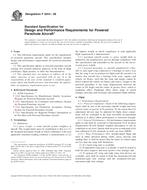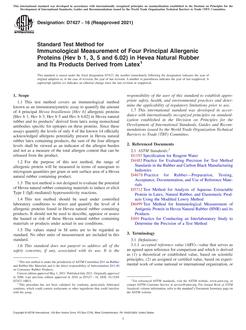1.1 This specification covers the production, properties, packaging, and testing of packaged, dry, combined materials for concrete and mortars. The types of concrete and mortar covered are described in the following paragraphs in this section. Some of the mixtures covered by this specification may not be available in some areas.
1.1.1 High-Early Strength Concrete -For concrete building and repair jobs requiring a more rapid strength development such as required for the earlier removal of forms.
1.1.2 Normal Strength Concrete :
1.1.2.1 Normal Weight Concrete -For general concrete building and repair jobs where thicknesses exceed 50 mm (2 in.). Typical uses include building or repairing sidewalks, patios, steps, footings, and for setting posts.
1.1.2.2 Lightweight Concrete Using Normal Weight Sand -For concrete building and repair jobs where lower concrete weights are desirable. These mixtures will produce concrete which is about 15 to 25% lighter in weight than normal weight concrete.
1.1.2.3 Lightweight Concrete -For concrete building and repair jobs where the lightest concrete weight is desirable. These mixtures will produce concrete which is about 25 to 35% lighter in weight than normal weight concrete.
1.1.3 High-Strength Mortar -For general concrete work requiring thicknesses of less than 50 mm (2 in.) or where a high-strength grout mixture is required. Typical uses include topping, patching, stuccoing, and tree surgery. Often referred to as sand mix.
1.1.4 Mortars for Unit Masonry -For laying brick, block, and stone, and for masonry repairs. The following three types of masonry mortar are covered:
1.1.4.1 Type N -For general masonry work requiring normal mortar properties.
1.1.4.2 Type S -For use where a higher strength masonry mortar is required.
1.1.4.3 Type M -For use where the highest strength masonry mortar is required.
1.2 The values stated in SI units are to be regarded as the standard. The values given in parentheses are provided for information purposes only.
1.2.1 Values in SI units shall be obtained by measurement in SI units or by appropriate conversion of measurements made in other units, using the Rules for Conversion and Rounding given in IEEE/ASTM SI 10.
1.3 The following safety hazards caveat pertains only to the test method portion of this specification. This standard does not purport to address all of the safety concerns, if any, associated with its use. It is the responsibility of the user of this standard to establish appropriate safety and health practices and determine the applicability of regulatory limitations prior to use.
Product Details
- Published:
- 08/10/2000
- Number of Pages:
- 5
- File Size:
- 1 file , 49 KB


